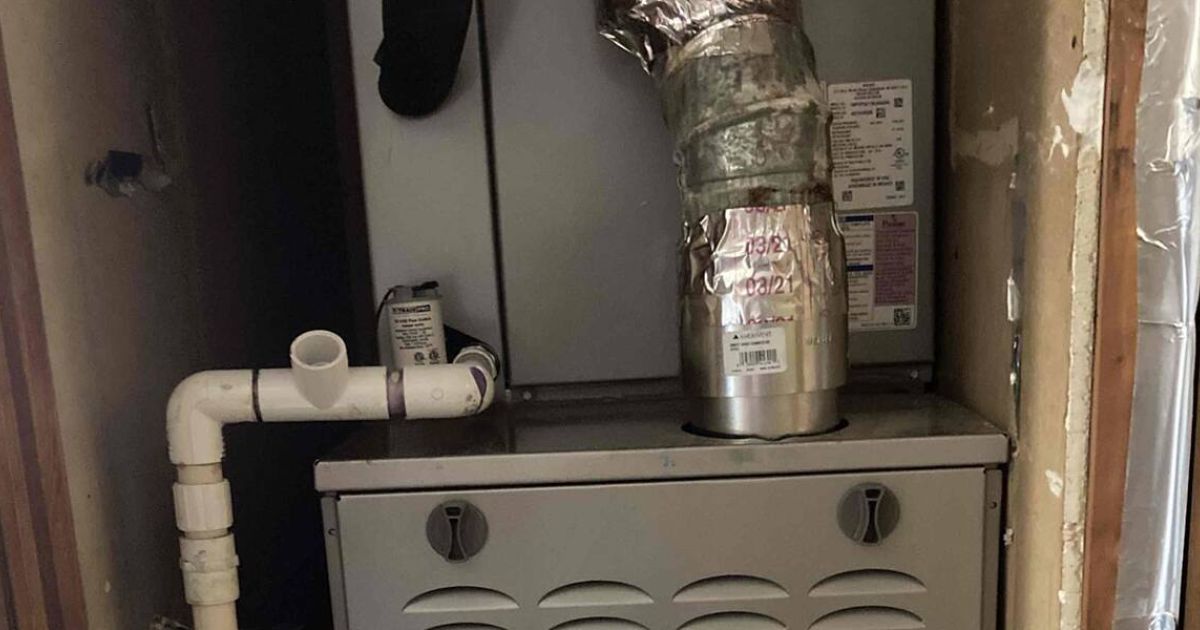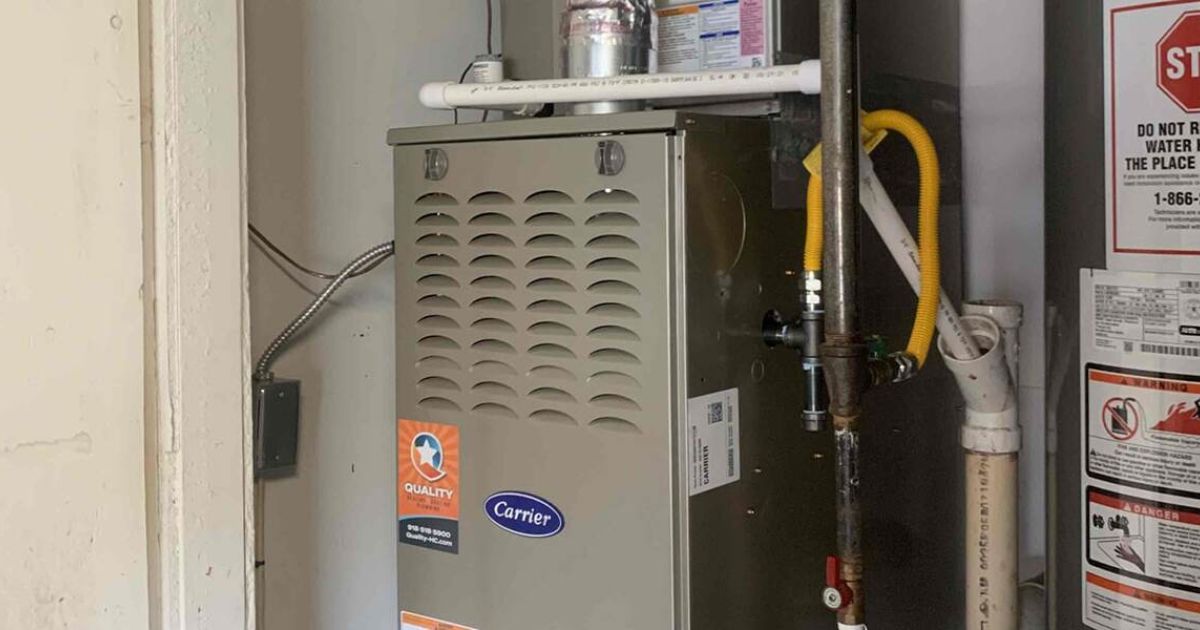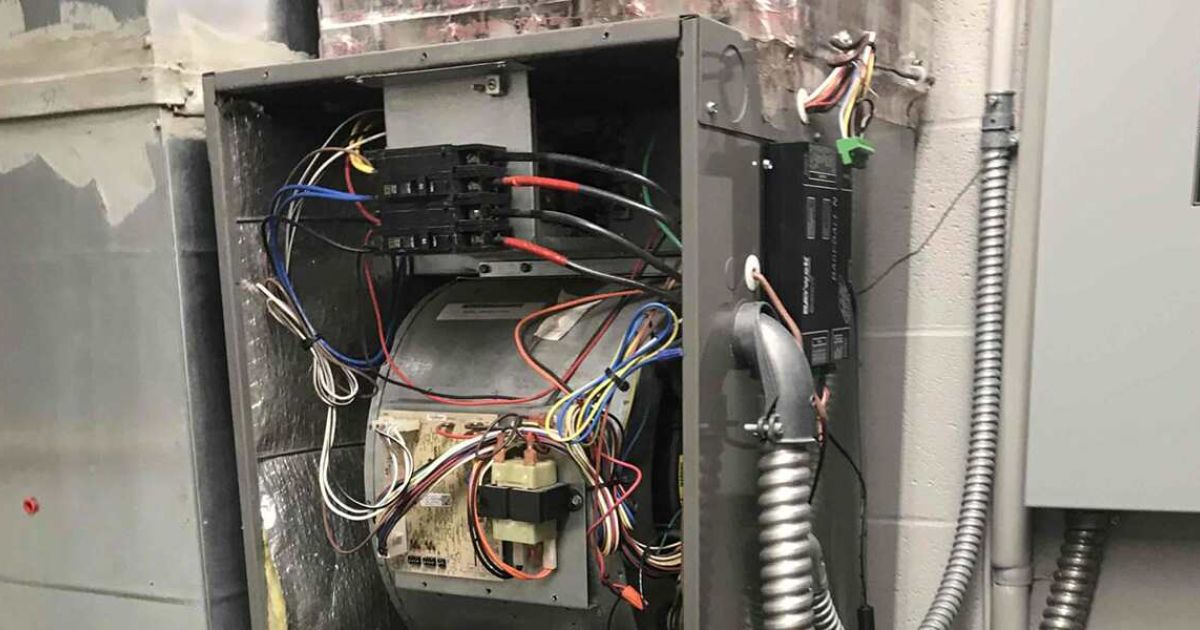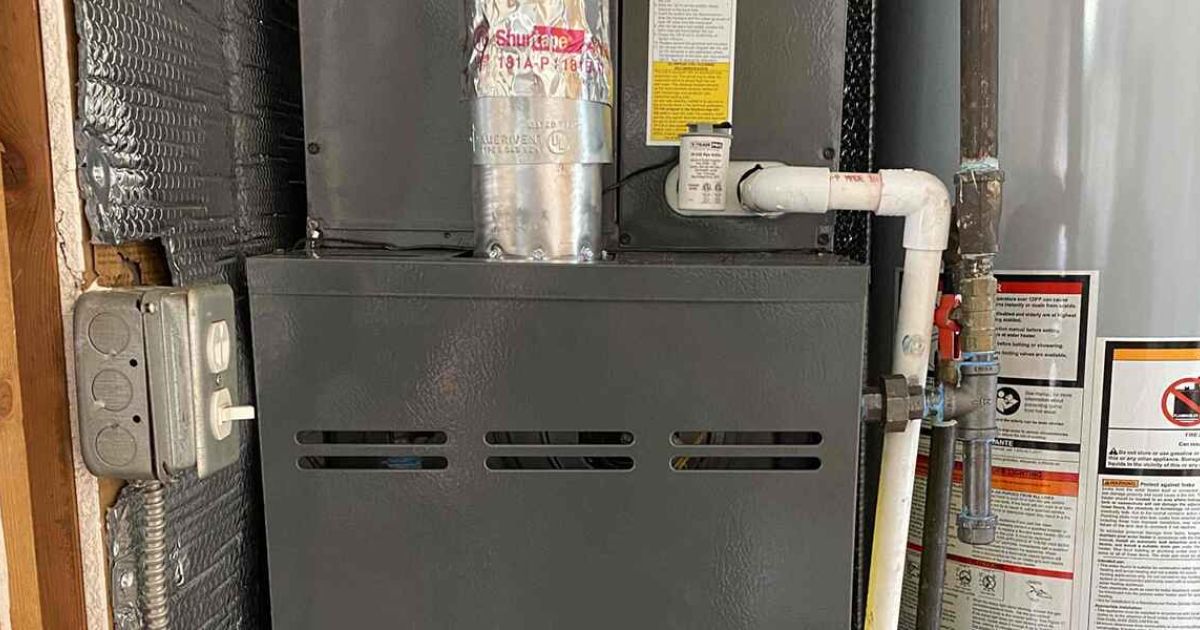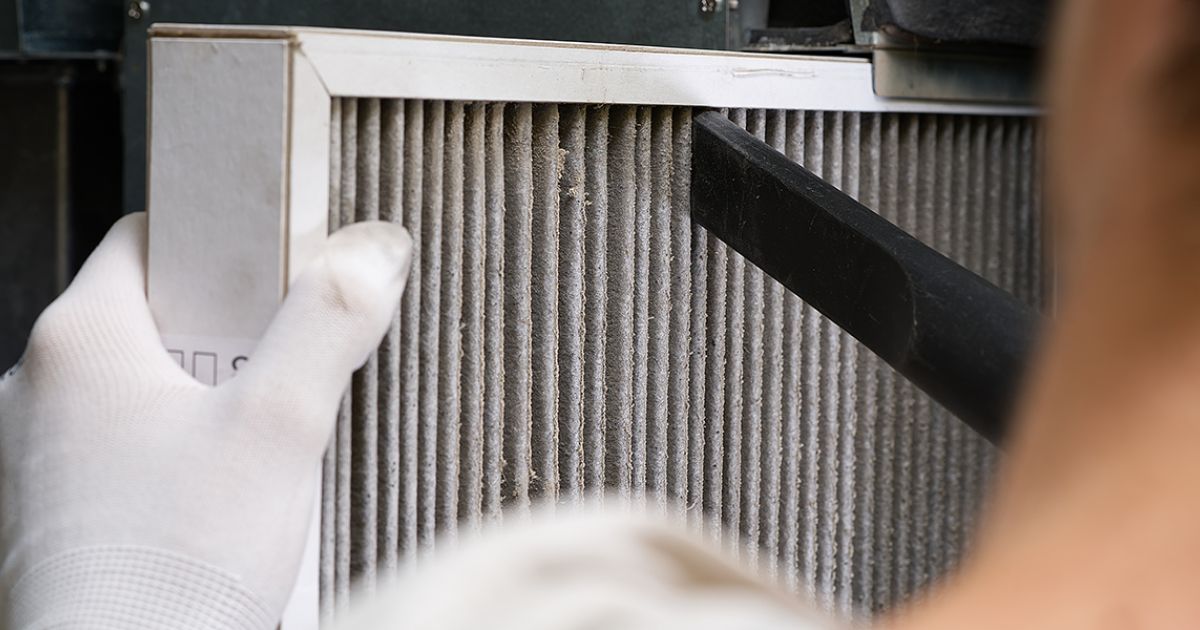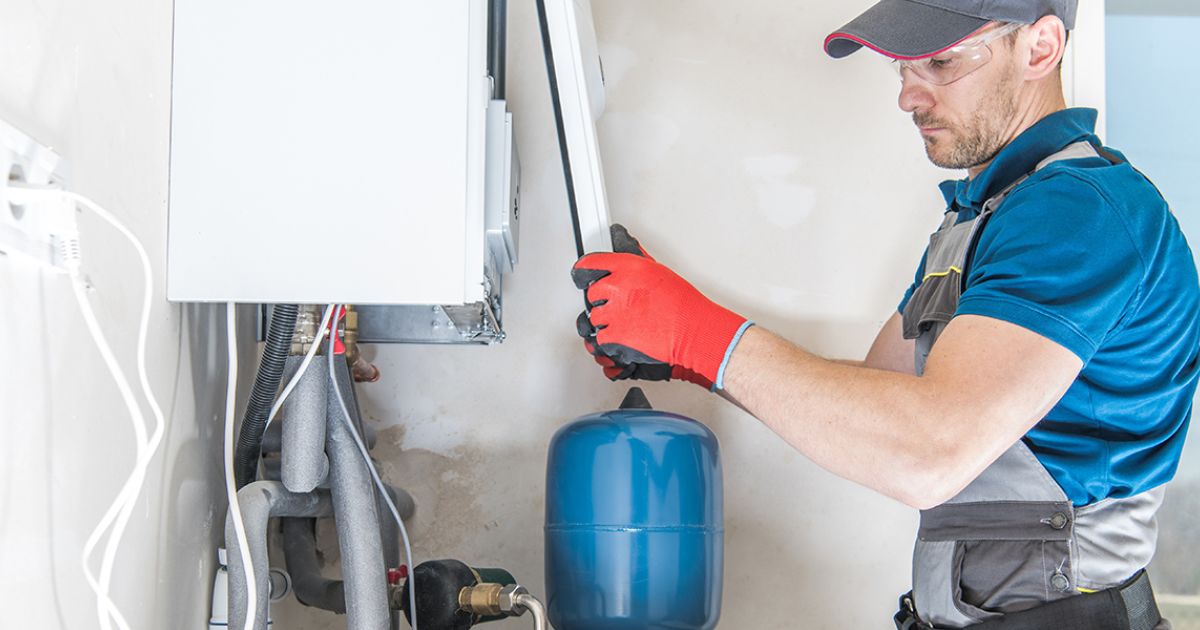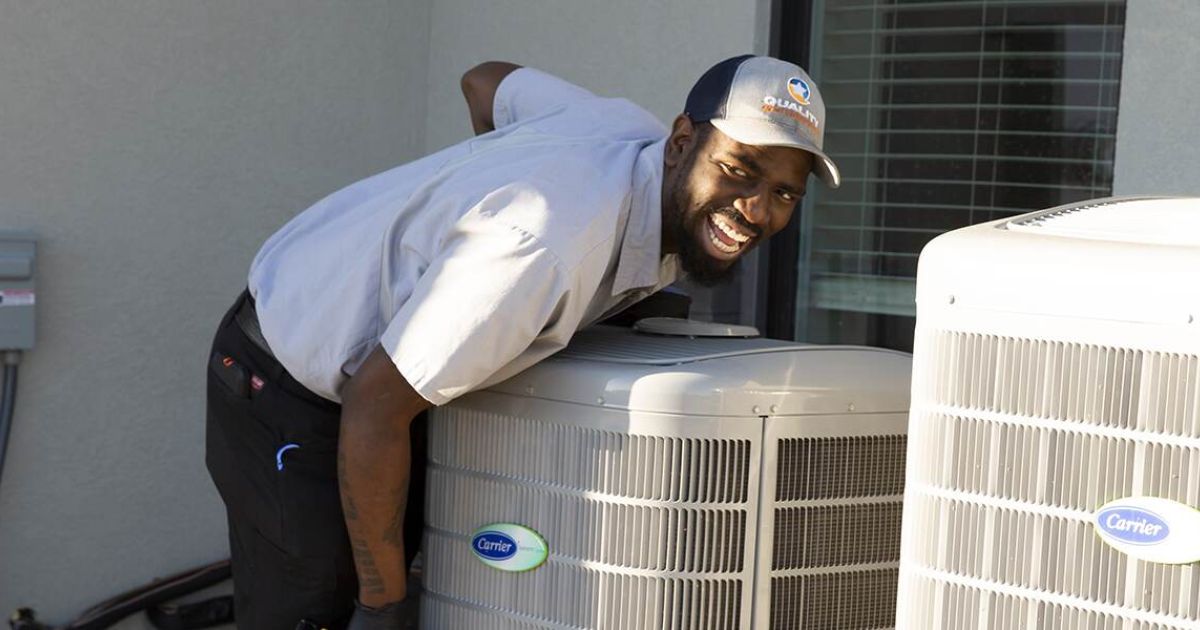
Are you having temperature control issues in different parts of your home? Call Quality Heating, Cooling, & Plumbing today to schedule the top-rated zoned AC installation service in Tulsa.
Have you ever noticed certain rooms in your home getting hotter or cooler than others? When seasonal temperature extremes hit, these inconsistencies can cause discomfort within your home. Homeowners can resolve temperature consistency problems by installing a zoned heating and cooling system.
What is zoned cooling? Zoned HVAC systems connect to multiple zones within your property and track temperature accuracy throughout these areas. These systems achieve even temperatures by ensuring every room reaches your desired coolness.
If you’re considering a zoned system for your home, Quality Heating, Cooling, & Plumbing professionals can guide you through the installation process. Call today to improve your home’s energy efficiency with a zoned HVAC system.
What is Heating and Cooling System Zoning?
Heating and cooling systems turn on and off based on the temperatures sensed by thermostats. Thus, homes with many rooms and only one or two thermostats might have temperature inconsistencies. The room with a thermostat might reach the desired temperature while other rooms remain too hot or cold.
So what is zoned cooling? Zoned cooling systems resolve temperature inconsistencies by increasing air distribution or temperature monitoring within your property. While there are many zoned cooling system options, the ultimate goal is to achieve an even, accurate temperature throughout your residence.
Properties That Benefit Most From Zoned Systems
While zoned systems improve nearly any home’s energy efficiency and temperature consistency, certain residences benefit more from zoning. These homes may have structural components that decrease energy efficiency or inhibit their system’s ability to gauge temperatures throughout the property.
Homes that benefit most from zoned cooling systems include:
- Multi-story homes
- Homes with a basement
- Properties with an attic or garage living space
- Houses with large windows or single-pane glass
- High ceilings throughout your space
- Properties with a sunroom
- Homes with multiple wings or wide layouts
While these properties have the greatest temperature inconsistencies, most homes will benefit from installing a zoned cooling system.
Cheaper Methods of Improving Climate Control Throughout Your Home
Because of the infrastructural work required to install zoned cooling, these systems may be a relatively significant investment. As a result, some homeowners resist adding zoning.
Fortunately, there are cheaper methods to improve temperature consistency throughout your home. Many of these techniques involve adjusting existing components of your system to improve indoor comfort without a significant investment.
Close Manual Dampers
Manual dampers allow you to redirect HVAC system airflow without changing thermostat settings. While every system has different dampers, you’ll find yours near the trunk or blower motor.
Depending on the season, you’ll want to redirect the dampers to blow appropriate air into the optimal part of your property. For example, since hot air rises, you’ll want to redirect airflow toward the bottom of your property. Conversely, aim dampers toward the top of your home during cooling cycles.
Despite their low cost, changing your manual dampers may not fully resolve temperature issues. As a result, you may need to consider investing in maintenance work that could improve your system.
Clean Coils and Filters
The coils and filters throughout your cooling system temper and clean your indoor air. Over time, these mechanisms gather dust, dirt, and grime that limit their efficiency and efficacy.
Hiring HVAC technicians to inspect, clean, and replace your coils and filters can significantly improve temperature distribution throughout your home. If certain rooms have dirty or clogged filters, this may prohibit them from reaching your desired temperature. Furthermore, broken down or inefficient coils won’t achieve your desired cooling level.
Inspect and Service Ductwork
Ductwork inspections and repairs can make a difference for temperature zoning. Since your ductwork transports cool air throughout your home, small leaks or holes can significantly impact temperature distribution.
Hiring HVAC technicians from Quality Heating, Cooling, & Plumbing to inspect and service your ductwork could resolve temperature zoning issues. Experts may need to plug holes or replace certain sections of ductwork to ensure every room receives the same level of cooling. Don’t hesitate to schedule professional service if you notice temperature differences throughout your property.
Different Methods of HVAC Zoning
Many homeowners don’t realize the various options available for HVAC zoning. These methods change the way your HVAC system cools your property and gives you options for improving consistency throughout your building.
Multiple Thermostats
Increasing the thermostats within your home improves zoned cooling. As previously mentioned, your thermostat monitors the temperature throughout your home. With only one or two thermostats, it might sense your desired temperature in one space without sensing inconsistencies elsewhere.
Multi-story or wide-layout homes benefit from multiple thermostats. Each section or floor of your home should have multiple thermostats to monitor how hot or cold the area is. Technicians will integrate zoning panels with your new thermostats to unite the system and ensure temperature consistency.
Multiple HVAC Systems
In some cases, installing multiple HVAC systems could be the best option for your property. Similar to having multiple thermostats, you can install different systems in dominant areas of your home. This may include one for each floor or side of your property.
Since different HVAC systems work independently to service smaller areas, they usually achieve faster and more effective temperature control. However, maintenance needs may increase as you add additional systems.
Single HVAC Trunk With Multiple Runs
Rather than increasing the number of systems in your home, you can renovate ductwork patterns and directions to achieve temperature consistency. HVAC trunks house the main blower motor that pushes cool air throughout your property. The attached run brings air to the smaller ductwork that cools each room.
Adding a run to your HVAC trunk creates additional pathways to allow the coolest air to reach more sections of your home. While it’s possible for one run to provide the main pathway for an HVAC trunk, zoned cooling consistency increases with more runs.
Ductless Mini-Split Systems
Ductless mini-split systems are popular for their energy efficiency and ability to cool individual rooms. Since these wall-hanging units provide cooling for only one space, installing multiple ductless mini-splits achieves temperature consistency.
Each ductless mini-split system consists of at least two units: the indoor air-handling unit and the outdoor condenser unit. While up to five air handlers can connect to a condenser unit, adding more will decrease airflow efficiency and increase maintenance needs. Thus, ductless mini splits might be best if you need to improve one room in your home.
HVAC Zoning Costs
Many homeowners want to know the costs of HVAC zoning. However, these costs differ based on the type of zoning you choose and the existing infrastructure of your property.
Some standard zoning installation costs include:
- Homes with existing ductwork for zoning: $4500 to $7000
- Homes without zoning ductwork: $5000 to $8500
- Single room ductless mini-split: $3500 to $6000
- Two-room mini-split: $5,500 to $9,000
- Three or more room mini-split: $8,500+
Advantages of HVAC Zoning
Despite their cost, zoned cooling systems offer major benefits to homeowners. First, you can expect energy savings from increased efficiency. The Department of Energy also offers federal energy efficiency grants and loans for upgrading HVAC systems.
Homeowners who install zoned cooling also note increased indoor comfort. Call professionals for zoned installation today.
Enlist Top-Rated HVAC Experts From Quality Heating, Cooling, & Plumbing
For more answers to the question, “What is zoned cooling?” or to learn more about forced air vs central air systems, call (918) 262-5245 and consult expert HVAC technicians from Quality Heating, Cooling, & Plumbing today.

Cassie Pound is the Vice President of Quality Heating, Cooling, Plumbing & Electric with locations in Tulsa, Glenpool, and Bartlesville, Oklahoma.


